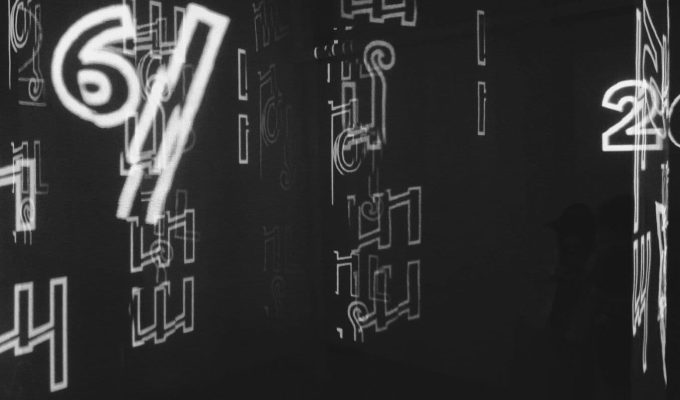Principles, competencies and tools for modern leadership. The New Leadership Training for managers with an explorers’ mind.
Lead confidently
in uncertainty
The world is uncertain and changing at the speed of light - stay safe and capable of acting despite this
New Work needs
New Leadership
Shape the new world of work with new ways of thinking, practices and future-proof leadership skills.
Put people
at the center
Develop people and the organization and unleash potential for your change and transformation
Excellent
Rating!
Our previous participants, HR professionals and Learning & Development experts have given us excellent ratings!
New Leadership is a modern concept of leadership for an increasingly complex and changing world. Unknown challenges, uncertainties and high dynamics require new principles, skills, structures and tools. Knowledge and experience from the past are only of limited help. The New Leadership Framework provides new ways of thinking and anchors new leadership principles and leadership skills that enable you to remain effective as a leader despite complexity and uncertainty.
Traditionally, organizations have been about stability, order, control and scaling. But the corporate environment is changing faster than ever before. Driven by ecological crises, global conflicts, trends, new technologies, digitalization, data and artificial intelligence, managers and organizations are reaching the limits of their ability to act.
In the future, managers will not only focus on business outcome, but also on human performance. This means focusing on learning and development, experimentation, imagining futures, diverse cultures and trusting working environments for employees – and the resulting feedback on the performance of companies.
In a study, however, only 16% of employees still state that they have trust in their employer (Deloitte, Global Human Capital Trends 2024). Leadership responsibility is therefore changing from number-driven management to a people-centric and agile organization with a high level of psychological security.
If the mindset, leadership skills, tools and leadership approaches of the past are no longer sufficient, then the leadership role must expand. New Leadership training provides the principles, skills and methods for a complex, dynamic and uncertain working environment. New Leadership promotes personal responsibility and self-organization, high performance teams and a New Work culture. New Leadership integrates economic, social and ecological responsibility and develops a new leadership effect.
Many programs and training courses for leadership development remain superficial. They only deliver new methods, but no deep transformation. We don’t just run a seminar or a training course, we embed a holistic New Leadership approach. We work with you on attitude, thinking and action patterns (mindset), new skills and abilities – and provide the necessary methods.
In other words: We have invested time to save you time. We have researched the essence of New Leadership (together with Karlshochschule International University) and offer you a compact, intensive and interactive learning journey and develop your potential as a New Leader.

Mit dem Laden des Videos akzeptieren Sie die Datenschutzerklärung von YouTube.
Mehr erfahren

Mit dem Laden des Videos akzeptieren Sie die Datenschutzerklärung von YouTube.
Mehr erfahren
You can find more videos on the New Leadership Principles on our triangility TV Channel.
Our New Leadership Training is designed as a cycle. All content is assigned to the domains “Leading Yourself”, “Leading Others”, “Leading Business” and “Leading Beyond” and divided into different modules.
We introduce various tools and methods that are applied in different contexts in several modules. This not only expands your leadership tools, but also deepens them.
Each format includes the introduction of theories, methods and guidance, trying them out, reflecting on them and then transferring them to everyday management. Each of your questions will be answered by coaches – in the seminar or in the workplace.
Here you will find an overview of the contents:
In this brief session, leaders are getting connected and familiar with the purpose, format, goals, logistics of the learning journey and collectively define the ground-rules for their collaboration.
We start by analyzing the invisible and unconscious influences on your leadership identity. What has formed the leadership identity you have right now? It has developed from beliefs and experiences as well as your understanding of your role and the corporate culture. The better you understand the complexity of your inner world, the better you will be able to master complex external challenges (team, company, environment, society).
We start our journey by becoming aware of unconscious inner and outer influences on your leadership identity and expanding your leadership experience:
How do personal values, beliefs and experiences form your leadership identity?
What influence do company history and culture have on your leadership work?
How do you deal effectively with cognitive dissonance and resolve internal and external contradictions?
How do you lead confidently, even if you have no answers or solutions to a question?
How can you increase the congruence of personality, role and culture in order to increase your influence by example?
How do you strengthen your focus and act instead of reacting on autopilot?
How can you strengthen your resilience and flexibility in order to master personal and professional challenges calmly?
How can you increase the self-organization and personal responsibility of your teams and consciously develop your own leadership role?
New leadership means being less of a decision-maker and more of a process designer for agile decision-making processes. In the second module, we will focus on strengthening the self-responsibility and self-organization of teams. They will awaken creativity, enable co-creation and interdisciplinary collaboration, increase diversity and ensure psychological safety.
In this module, participants will place a strong focus on mindset and skills relating to communication, coaching, facilitation and transformation processes:
How do you overcome internal silos and enable cross-functional, interdisciplinary collaboration, co-creation and innovation?
How can you promote lateral thinking and put it into practice?
How can you communicate in order to increase intrinsic motivation for change and effectively support transformation processes?
How do transformation processes work in principle and what role do you play in a transformation as a manager?
How do you lead self-directed teams and enable autonomous decision-making processes in order to increase the agility of your teams and minimize risks?
What can you do to align the values and goals of employees and the company?
How do you strengthen and maintain relationships beyond organizational roles, ensure psychological safety and promote healthy, open cooperation?
How do you avoid destructive discussions and promote dialog?
How do you integrate coaching, mentoring and facilitation authentically into your management work and deal flexibly with uncertain situations and high levels of complexity in the attitude of a coach?
How can you help employees to develop their unique potential and strengths in the best possible way?
Which tools and measures help you to continuously develop the necessary new skills in your teams?
How do you build high-performance teams and lead in a hybrid working environment?
What leadership skills and techniques will help you to promote flow, energy, creativity and collaboration in virtual and hybrid environments?
In this module, we look at how your company is currently creating value – and how you can align your business for the future. The focus is on your business model and how social, technological, environmental and economic trends influence it. We look at the visible (business model, structures) as well as the invisible part (values, culture) of your organization and how both can be changed effectively.
As a participant, you will get to know the two ‘operating systems’ for leadership and management.
How do you discover relevant megatrends for your company? How can you use them to future-proof your business model?
What role do services play in the future business model and how do you develop them co-creatively with various stakeholders?
How can you change fundamental cultural beliefs and assumptions and align your actions with sustainable value creation?
How do you act in two operating systems and ensure agility in the face of complexity and uncertainty on the one hand and stability and structure on the other?
How can you successfully manage the transition from hierarchical and bureaucratic systems to decentralized, networked and agile forms of work?
Why is purpose important to promote intrapreneurship?
How do you initiate necessary cultural change if you cannot manage culture and resist every impulse for change?
Why is every cultural change essentially a transformation, and how do transformation processes generally work?
How can you effectively shape change if everything is always an intervention in the (complex) social system?
Which structures, processes and resources are best suited to successfully support transformation in your company?
In the last module, we look beyond the boundaries of your company. We examine the principles, skills and tools needed to align economic goals with social and environmental responsibility. We create a new leadership paradigm that is oriented towards sustainability and considers leadership in the context of ecology and society.
In this module, we broaden our view of diverse and complex stakeholder networks and the necessary change to become an ethical and sustainable company:
What does sustainable mean, and what schools of thought, frameworks and models are established?
What is the difference between shareholder and stakeholder capitalism and how do you shape this transformation?
Where does sustainable conflict with your company’s traditional values, beliefs and assumptions and the macro-economic paradigm?
How do you explore ethical conflicts and find the “least bad solution” through dialog?
What role do technology, data, analytics and AI play on the path to sustainable business?
What are the characteristics of systems and why is systemic thinking a future skill?
How do you transform your business from linear value creation to a circular economy?
How do you establish ecological and social sustainability in your daily actions and integrate all stakeholders into a new definition of value creation?
How do you increase your awareness and use human skills such as empathy, mindfulness, creativity or intuition as a unique selling point in the age of AI?
What can you do to develop regenerative and integrative systems in your company, society and for future generations?
How do you develop a sustainable business model?
Experienced Experts
Our trainers have been in management positions themselves for many years and have dealt with various management models. This expertise is now available to you.
Learning by doing
The training is a laboratory. You learn new things, apply them and reflect on what you have learned. Experience and reflection are an essential part of the training - we don't deliver a PowerPoint battle.
Learning Library
All participants have access to our extensive learning library with over 200 units, videos, templates and more resources, which can also be used in day-to-day leadership situations.
Community
All participants work together intensively and form a community. Even after the training, you remain part of a leadership community and can actively develop your leadership skills.
Would you like to run this as an in-house training course? Would you like to work on specific case studies or challenges in your company?
We tailor our formats to your needs or the needs of your managers and teams. To start with, we offer you a free co-creation (90 min). Let’s start with an initial meeting
This Learning Journey consists of three integrated elements: Classroom training, challenges in self-organized learning groups and on-demand learning. In 7 modules, our experienced trainers provide helpful insights and skills relating to New Leadership, which are further developed in self-organized learning groups.
The active application of the content in everyday working life is crucial in order to not only deepen new knowledge, but also to achieve visible success for your organization. To make this possible, we provide participants with a wide range of exercises and tools that ensure an exceptional and successful learning experience and outcome.
In addition, we can tailor this learning journey to your organization and enable managers to act like in-house consultants and develop concrete approaches for a New Leadership Culture.

New Leadership differs from traditional leadership approaches in terms of context. Every successful innovation was scaled at some point. The requirements quickly changed towards quality, cost efficiency, control – and the skills required for this. Traditional leadership models and management systems have a wealth of experience in this domain (“exploit”). However, many companies now find themselves in the innovator’s dilemma: the way of thinking and acting that generated innovation must now give way to stability and order.
Innovation and change, however, take place in the chaotic or complex domain (“Explore”). The requirements here are completely different: experimentation, rapid learning, risk minimization and rapid implementation through iteration, cross-functional and interdisciplinary collaboration, high communication requirements. The skills required for this are completely different and are no longer traditionally present. New leadership is a further development – not a replacement – of the previous leadership model.
(The terms Explore and Exploit go back to Alexander Osterwalder and his work on “Business Model Innovation”)
Managers play a fundamental role in the implementation of New Leadership in companies. By looking at organizations as social systems, managers have the opportunity to change interactions (collaboration, communication, idea generation, decision-making processes, etc.). Change in the direction of New Leadership does not happen by announcing it on PowerPoint – but in the daily thinking and actions of managers.
New Leadership Training can help managers in a changing world of work by not only providing theoretical impulses, but by going deeper: through experimentation, experience and reflection, basic convictions are made visible and changeable. We not only teach skills and competencies, but also principles. These are points of reference for daily decisions and bring sustainable change not only to the individual manager, but to the culture.
In our New Leadership Training, we teach 8 meta-competencies: self-reflection; understanding social systems; dealing with complexity; dialogical leadership & collaboration; creativity, co-creation and innovation; business model design; data literacy and ecological and sustainable development. These meta-competencies integrate a variety of other competencies and skills.
New Leadership Training offers companies and their managers two important advantages: practicability and anchoring. Almost every company – from regional SMEs to large corporations – has understood that it needs to change. But many change measures in companies are not coordinated – or even contradict each other. With our integral approach, we turn all participating managers into co-creators of change. They become aware of the complexity of transformations, but at the same time receive new thinking models, methods and tools.
With the New Leadership Training, transformation is no longer “ordered” to employees or “pushed” by a small team of organizational developers, but initiated and accompanied by all managers with a common understanding and from the heart of the organization.
We deliver the New Leadership Seminar in a wide variety of formats: in conventional classes, but enriched with e-learning, curated content for self-study, as a live online or hybrid event. There is no one right form, it depends on your framework conditions, the content requirements and the openness of the participants. Online-only seminars are practically impossible for this major topic.
The full New Leadership Training lasts 12 days and takes place over a period of 6-12 months. It integrates a series of face-to-face training sessions and online sessions, while participants work on case studies in parallel and are supported by triangility coaches.
This makes the New Leadership Training a modern training course for managers and provides the foundation for a future-oriented management culture.
At best, every employee in a leadership role. Our New Leadership principles are new to everyone, so we do not impose any restrictions on our part. The mix of first line managers, middle and senior executives in particular often creates an interesting dynamic and a fruitful exchange.
Each training or program is developed to meet the specific requirements of your company. This begins with a co-creation, concept phase, iterative improvements and a roll-out. We don’t do anything “off the shelf”, but immerse ourselves deeply in your culture and structure. In this way, our work becomes part of your organizational development.
Admittedly, this is a challenge. How do you combine universal New Leadership principles and new leadership skills with very specific, strategic topics such as digitalization, AI or sustainability?
And how do you adapt this to your company? We master this through our community of trainers from different disciplines, who are integrated into the development process from the outset and “speak the same language”. This means we cover a diverse range of topics, but work together with the same spirit.
All of the trainers in our community have their own leadership experience, have all completed in-depth external coaching and/or trainer education and have also taken part in our internal train-the-trainer programs.
Do you have questions about New Leadership Training? We look forward to talking to you! We will be happy to answer your questions about your goals, topics, requirements and conditions for your transformation – and of course about dates and costs. Please write to Verena using the contact form.


A Learning Journey for Data Leaders in the Data Driven Economy

Enhance your skills and competences as a leader and become a driver of sustainability

Leverage artificial intelligence with our AI for managers training

Leading remotely and managing the hybrid workplace